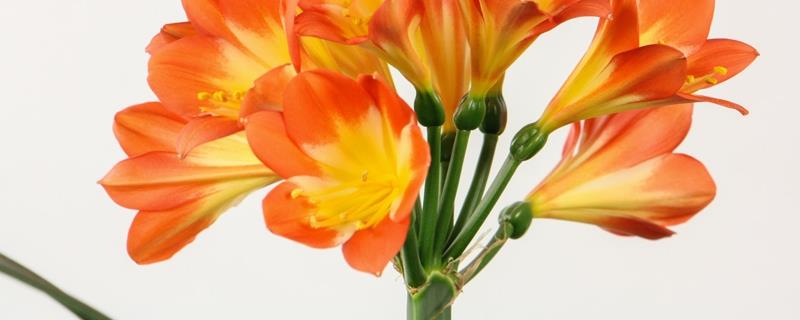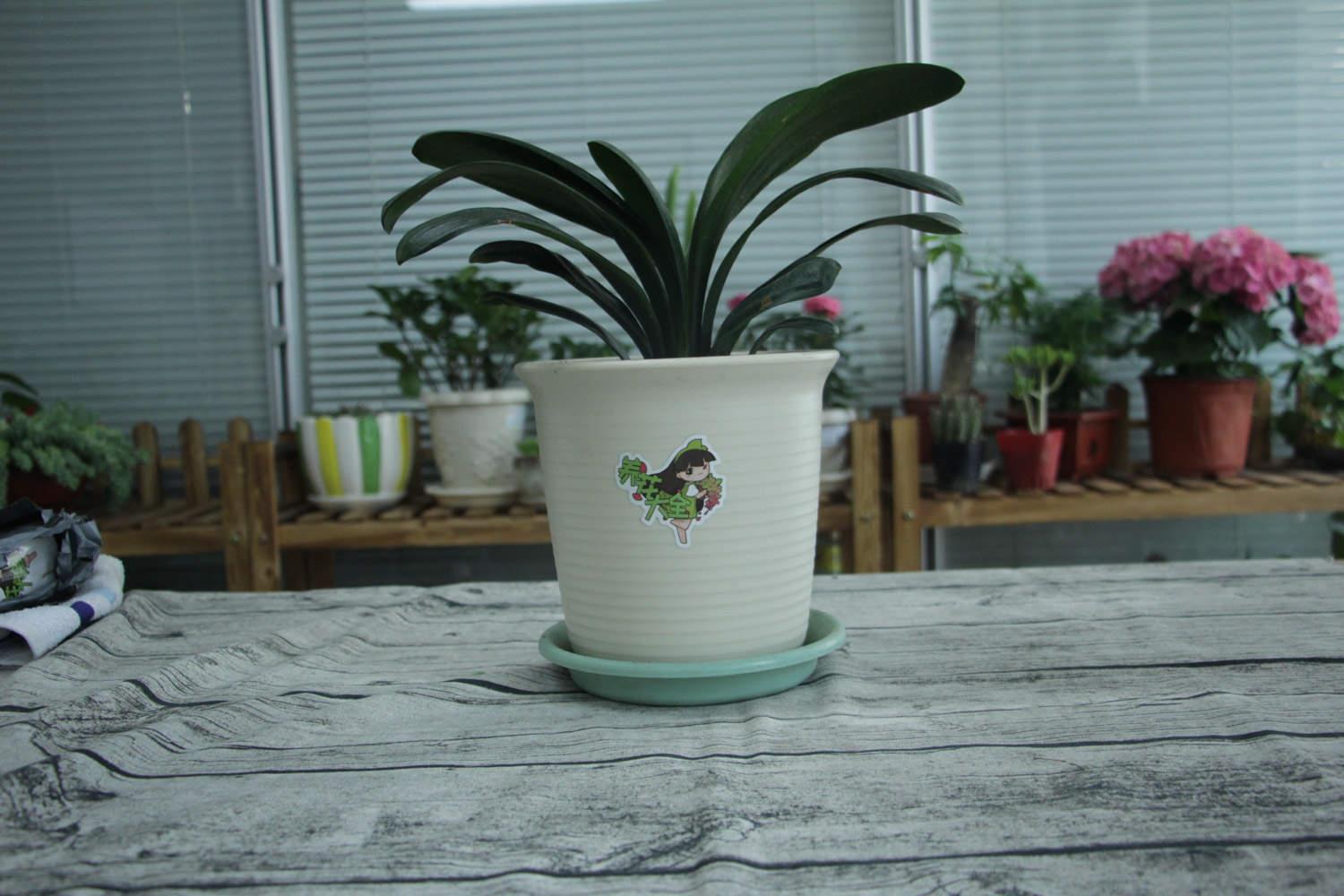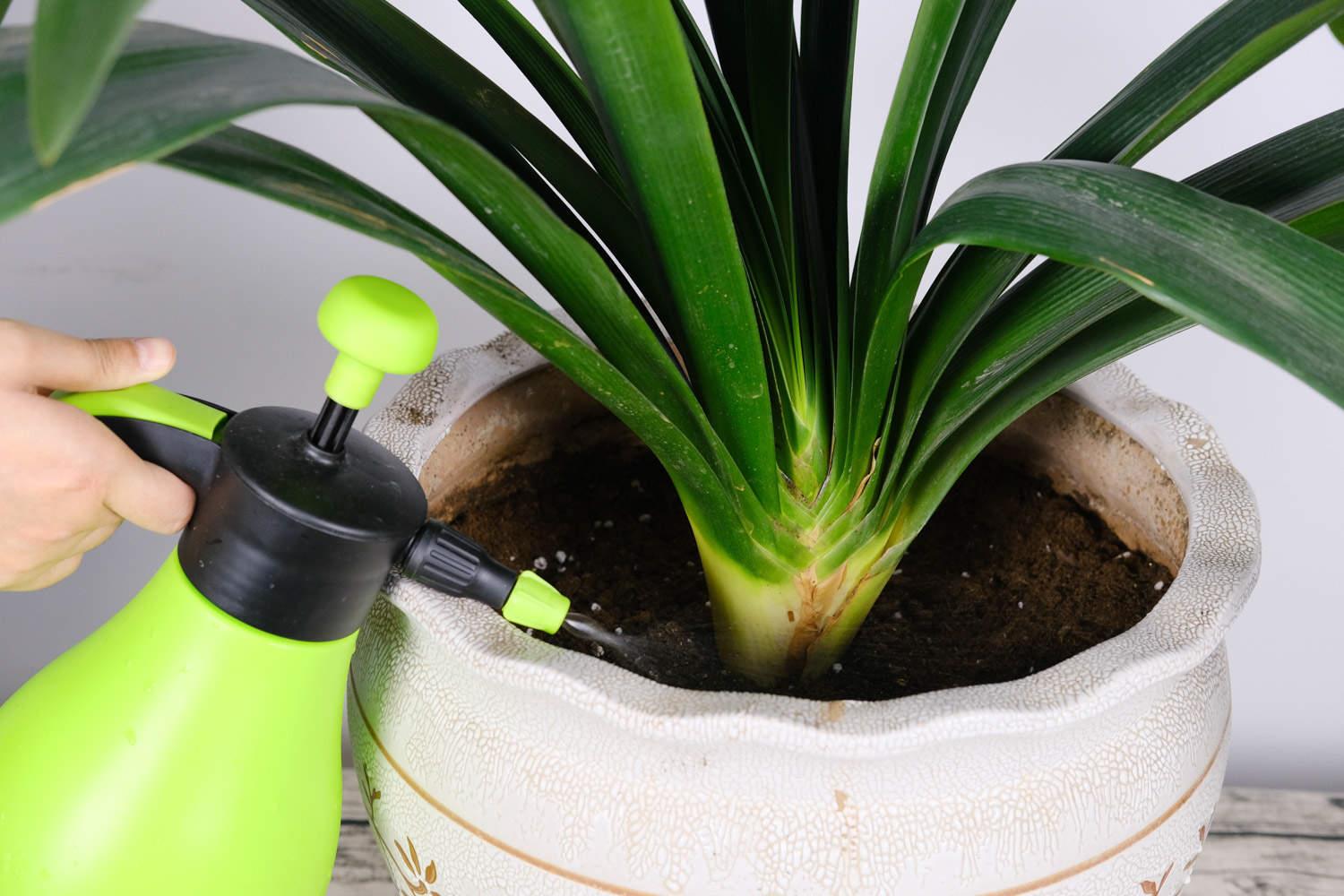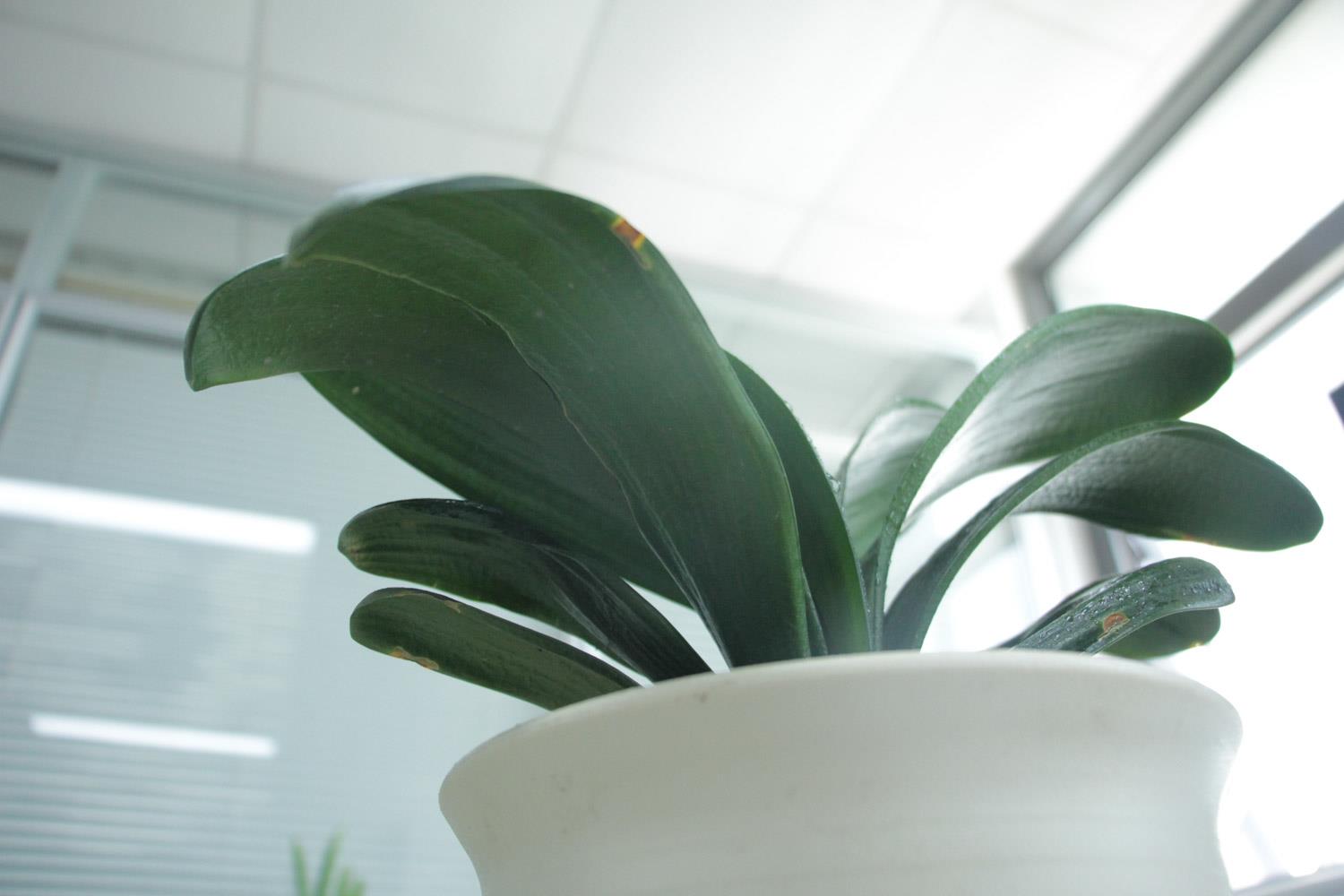How to raise Clivia
Last Update :2024.11.13
Article Catalog
What to do if Clivia pinches arrows
What to do if Clivia has rotten roots
Clivia prefers a warm, humid, well-ventilated and sunny environment, so try to satisfy it during the maintenance period. It is not cold-tolerant and has limited high-temperature resistance. It needs good temperature control in summer and winter. Although it likes a humid environment, it is not tolerant of waterlogging. The amount of watering must be controlled, and the soil must be moist, not waterlogged. During the peak growth season, it consumes a lot of nutrients and requires timely top dressing, especially before flowering. Spray more dilute potassium dihydrogen phosphate fertilizer solution. In addition, it needs to be repotted every spring and autumn.

1. Soil
1. Soil
When maintaining Clivia, you need soft, breathable, fertile soil with strong drainage capacity. Pay attention to the soil preparation method. You can mix leaf rot soil and river sand in a ratio of 7:3, or you can mix peat soil, pine needle soil, perlite, and decomposed peanut shells in a ratio of 2:2:1:1. The soil prepared by yourself needs to be disinfected before use. It can be disinfected with disinfectant solution or exposed to the sun. Or go to a flower shop to buy special soil.
2. Light
Clivia likes light, but it can only accept scattered light and is afraid of strong light. The sunlight in late spring, summer and early autumn is very strong, so it should be placed in a slightly dark place indoors and not exposed to the sun, otherwise it will easily cause sunburn. The light at the beginning of spring, late autumn and winter is very soft. It can be placed in a place with good light and let the Clivia get more sunlight to promote better photosynthesis. The leaves will become greener and can bloom better.

3. Temperature
The suitable temperature for the growth of Clivia is between 15 and 25°C. It is afraid of high temperatures and has low cold tolerance, so timely temperature control measures need to be taken in summer and winter. When the temperature exceeds 30°C in summer, ventilation should be strengthened, strong light should be blocked in time, and water should be frequently sprayed to cool down. In winter, when the temperature is lower than 5℃, you need to move to a warm place. It is best to control the temperature at around 10℃ to avoid frostbite.
4. Watering
Clivia likes a humid environment, but it is afraid of waterlogging. Its root system is fleshy, and it will easily rot if there is too much water. Therefore, you don’t need to water it too frequently. Just water it when the soil is dry. If the soil is damp, don't water it yet. The specific frequency of watering depends on the season. Usually once every four or five days in spring and autumn, once every one or two days in summer, and with appropriate water control in winter, once a week or so is enough. If the climate is relatively dry, you can frequently spray water on the plants to increase the humidity.

5. Fertilization
It is a plant that likes fertilizer. When planting it in a pot, you need to put base fertilizer at the bottom of the pot. Use decomposed organic fertilizer as the base fertilizer. During the peak growing season, a lot of nutrients are consumed, so timely top dressing is required. The specific fertilizer type depends on the growth stage. In the early stages of germination, dilute compound fertilizer can be applied, preferably with more nitrogen, to promote better germination. Before flowering, fertilizers rich in phosphorus and potassium should be applied, and the amount of nitrogen fertilizer should be reduced to avoid excessive growth. Potassium dihydrogen phosphate fertilizer can be diluted and then sprayed with fertilizer liquid. It consumes a lot of nutrients during the flowering period. After the flowering period, it needs top dressing to promote rapid recovery. At this time, compound fertilizer containing a variety of elements can be applied.
6. Diseases and Pests
If the environment provided by Clivia during the maintenance period is not suitable, such as poor ventilation, too frequent watering, or too high temperatures, it will be susceptible to diseases and insect pests. Once discovered, Treatment must be carried out as soon as possible to avoid death. Common diseases include leaf spot, anthracnose, soft rot, etc. You need to isolate them first, then prune the diseased parts and use sterilization and disinfection drugs. The common insect pest is scale insects. If the number of pests is small, just scrape it off. If the number of pests is large, it needs to be sprayed with 25% phosphosulfate emulsifiable concentrate 1000 times for treatment.

7. Repotting
1. Time: During the maintenance of Clivia, it is necessary to repot it once a year, so that there will be enough growing space, and the soil will not be easy to compact, which can promote the growth of Clivia more vigorously. Repotting is generally carried out in March in spring or around October in autumn. The climate is suitable and can help it resume growth as soon as possible.
2. Remove the pot: If you want to repot the Clivia, you need to cut off the water one week in advance, so that it can be easily removed from the pot. Take the plant out with the soil ball and carefully remove the soil ball to expose the root system. It is also necessary to prune rotten roots, dead roots, old roots, etc., leaving only strong root systems. After pruning, it must be disinfected and sterilized by soaking it in carbendazim solution for a while.
3. Pot soil: The original pot soil can no longer be used. The flower pot should be slightly larger and have drainage holes at the bottom. The soil can be prepared using the above method, or nutrient soil can be purchased.
4. Potting: Prepare the potting soil and dry the Clivia wound before potting it. First, lay ceramsite at the bottom of the flower pot to improve air and water permeability, then add soil, base fertilizer, plants, and slowly fill in the soil and compact it. After planting, water it thoroughly in time and maintain it in a warm, semi-shady and well-ventilated environment. If the environment is suitable, normal growth will resume soon.
8. Divisions
Clivia is generally propagated by divisions. First take out the Clivia, carefully remove the soil from the roots, and prepare sterilized knives. Then find the axillary buds that can be divided and carefully remove the small buds with a knife. After taking it off, dry the wound, hydroponically grow the roots, and then plant it into the soil after the root system has grown. This will have a higher survival rate and faster rooting.

Clivia clip What to do with arrows
Clivia is prone to pinched arrows. Once discovered, it needs to be treated as soon as possible. You can use a black plastic bag to completely cover the Clivia, or move it to a light-proof place. Do not let it bask in the sun first. This will encourage the flower and arrow to grow longer, so that the arrow can be drawn successfully. Also pay attention to the temperature difference between morning and evening. Large temperature differences during the flowering period make it easier to draw arrows. It is best to control the temperature at around 25 degrees during the day and around 15 degrees at night, so that the flower arrows can be drawn out quickly. You can also prepare slightly thicker strips of cloth to help separate the leaves on both sides of the Clivia, so that there is enough space to encourage the flower arrows to be drawn out as quickly as possible.
What to do if Clivia has rotten roots
1. Strictly control water: The root system of Clivia is fleshy and is afraid of waterlogging. If the amount of watering is not controlled well, root rot will easily occur, seriously hindering growth. The amount of watering must be strictly controlled. The soil should be slightly moist, and there should be no water accumulation to avoid root rot.
2. Reasonable fertilization: Root rot of Clivia may also be caused by improper fertilization. Although it likes fertilizer, it is afraid of thick fertilizer and fertilization. If thick fertilizer is applied, it will easily cause fertilizer damage, which will lead to root rot. To topdress it, follow the thin fertilizer method and apply it frequently. It is best to dilute the fertilizer and then apply fertilizer liquid.
3. Treatment method: No matter what the cause of root rot is, once it is discovered, the plant must be removed from the soil as soon as possible, and the roots must be pruned to cut off all the rotten roots. Disinfect and sterilize. The original soil can no longer be used, so dump it all, prepare new soil, and repot the plants. If treated promptly, growth can resume.
How to survive the winter with Clivia
Although Clivia blooms in winter and spring, its cold tolerance is not high. After winter, it needs to be moved indoors and the temperature must be controlled at about 10 degrees. Especially in northern areas, it must be placed indoors. After winter, its growth rate slows down, the frequency of watering should be reduced, and watering should be done after the soil dries out. If there is heating indoors and the climate is dry, you can spray water frequently. In addition, it is necessary to let it get more sunlight. In winter, the light is soft. It is best to place it indoors in a place with good lighting and get more sunlight. This will help it survive the winter and bloom.
2. Lighting
3. Temperature
4. Watering
5. Fertilization
6. Pests and diseases
7. Change basin
8. Branches
What to do if Clivia pinches arrows
What to do if Clivia has rotten roots
- END -
The main varieties of the top ten merits

Look closely at pictures of this plant and you'll notice they don't all look exact...
The Difference Between Sanwei Kwai and Fengwei Bamboo

Appearance: The leaves of Sibirica are longer and the stems are solid; the stems o...